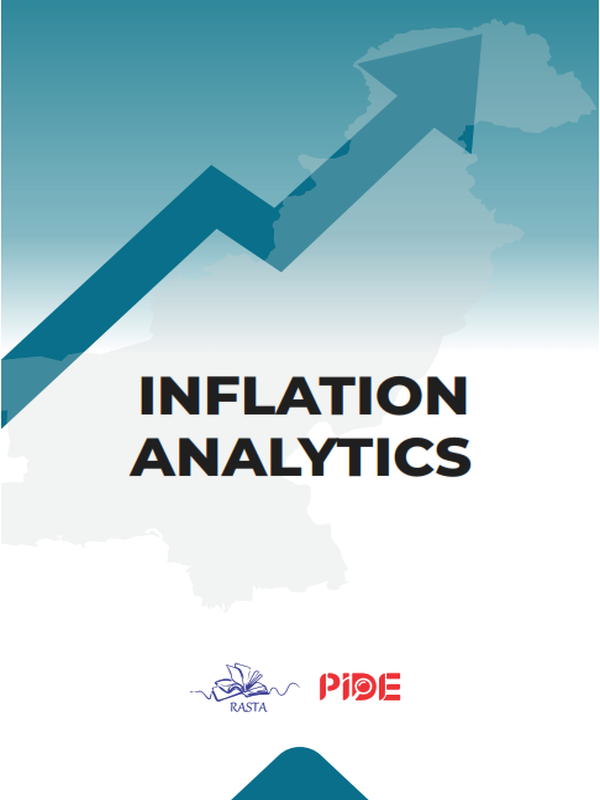Inflation Analytics
EXECUTIVE SUMMARY
Inflation[¹] is projected to fall between 10.0 to 10.5 per cent in FY2022 and 11.0 to 11.5 per cent in the first half of FY2023. Inflation (YoY) is expected to remain in the range of 11.5 to 12.0 per cent by end-June 2022 and 8.5 to 9.0 per cent by December 2022.
Pakistan Institute of Development Economics (PIDE)’s inflation forecasting models predict inflation to remain between 10.0 to 10.5 per cent in FY2022 and 11.0 to 11.5 per cent in the first half of FY2023. Compared to forecasts made by the State Bank of Pakistan (7 to 9 per cent), the International Monetary Fund (8.5 per cent) and the Asian Development Bank (7.5 per cent), PIDE forecasts inflation to remain substantially higher. PIDE also expects inflation to persist in double digits till December 2022 with an upward momentum through the remaining part of FY2022 and the first half of FY2023. PIDE strongly believes that there will be a significant upward revision in the State Bank of Pakistan’s forecasts (expected range of 9.0 to 11.0 per cent from the previous forecast of 7.0 to 9.0 per cent).
Despite being significantly higher than forecasts by other institutions, PIDE’s forecast is perfectly in line with the results of the Survey of Industry experts.[²] More than 80 per cent of the respondents expected inflation in FY2022 to remain between 9.5 to 11.0 per cent. The respondents also believed that inflation will remain in double digits in the next two fiscal years and will only be back to a single digit in FY2024. Survey participants also expected GDP growth to remain between 4.0 to 4.7 per cent in the next several years.
PIDE analysis also indicates that inflation persistence has risen and will further rise in the next five quarters. Out of 94 composite commodities, around 70 commodities are projected to continue with double-digit growth in their prices. Out of these 70, more than 25 commodities are projected to grow at more than 14 per cent. PIDE also anticipates inflation to remain broad-based with both food and non-food items contributing to high inflation. The measures of uncertainty and fan charts also indicate that inflation is expected to remain within the range predicted by PIDE’s models.
The increasing trend of inflation with high persistence and a broader base supports PIDE’s suggestion for an immediate adjustment in the policy rate by at least 75 basis points. PIDE’s inflation forecasting models anticipate a one per cent increase in electricity prices, translating into an 8 per cent increase in fuel prices and an upward policy adjustment of 75 basis points in policy rate within the next two months given the prior information that Pakistan requires at least a 14 per cent increase in electricity prices to overcome the crushing burden of ever-increasing circular debt. We introduced an additional shock of 13 per cent in the next five months and found that with the full adjustment of electricity shock, inflation could go up 0.43 per cent in FY2022 and 0.66 per cent in the first half of FY2023. Similarly, the additional shock of 10 per cent in fuel prices could further push the inflation by 0.32 per cent in FY2022 and 0.46 per cent in the first half of FY2023. The inflation forecast anticipates 8 per cent policy rate and expects inflation to come down by 0.26 per cent by December 2022 with every 100 basis points increase in the policy rate.
________
[1] Inflation means average CPI (Consumer price Index) Inflation.
[2] PIDE conducted the survey and recorded responses of 61 respondents.
________
For Full Text Download PDF




